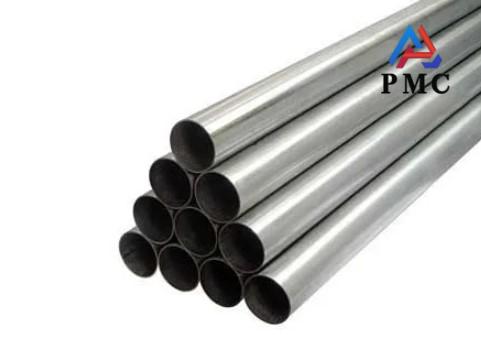
Wall Thickness Deviation Standard of SMLS Steel Pipe
The wall thickness deviation of smls steel pipes is an important indicator to measure their dimensional accuracy and quality. Different standards, different production processes (hot rolling, cold rolling, cold drawing) and different nominal sizes will also have different allowable wall thickness deviation ranges. The following is an overview of some commonly used international and domestic seamless steel pipe wall thickness deviation standards carefully summarized by Permanent Steel Manufacturing Co., Ltd:
Common international standards
1. ASTM (American Society for Testing and Materials) Standards
The ASTM series of standards are widely used steel pipe standards worldwide, which have clear provisions on wall thickness deviation. The most common provisions are:
ASTM A53 / A106 (carbon steel pipe), ASTM A333 (low temperature pipe), ASTM A335 (high temperature alloy steel pipe) and other general pipeline standards:
It is usually stipulated that the minimum wall thickness at any point should not be less than 12.5% of the nominal wall thickness (specified wall thickness).
For example, if the nominal wall thickness is 10 mm, the actual measured minimum wall thickness should not be less than 10 mm × (1 − 0.125) = 8.75 mm.
There is usually no specific upper limit on wall thickness, but there is usually an implicit upper limit or it is controlled by weight tolerance.
ASTM A519 (Seamless Carbon and Alloy Steel Tubes for Mechanical Use):
This type of standard usually requires higher dimensional accuracy, and its wall thickness deviation is usually ±10% or ±12.5% of the nominal wall thickness, depending on the outer diameter and wall thickness ratio.
Precision cold drawn/cold rolled tubes have tighter tolerances, which may reach ±5% of the nominal wall thickness or even less.

2. API SPEC 5L (American Petroleum Institute Standard 5L) - Line Pipe
API 5L is the most important standard for the oil and gas industry, and its wall thickness deviation regulations are similar:
The minimum value of the wall thickness at any point should not be less than 12.5% of the nominal wall thickness (specified wall thickness).
For high-grade and special-purpose pipelines, there may be more stringent internal control standards.
3. EN (European Standard)
European standards such as EN 10210 (Hot-finished structural hollow sections), EN 10216 (Seamless steel tubes for pressure purposes) also have detailed wall thickness tolerance tables. These standards usually specify specific wall thickness deviation percentages or absolute values based on the outer diameter and wall thickness range of the steel pipe.
Chinese National Standard (GB/T)
1. GB/T 8162 (Seamless steel tubes for structures) and GB/T 8163 (Seamless steel tubes for conveying fluids)
These two are the most commonly used seamless steel pipe standards in China. According to the latest version (such as GB/T 8163-2018), the allowable deviation of wall thickness is usually as follows:
The allowable deviation of wall thickness is usually specified as ±12.5% of the nominal wall thickness.
For some large diameters or special wall thicknesses, there may be specific millimeter values or different percentages.
For example, for the nominal wall thickness S, the deviation range is S×(1−12.5%) to S×(1+12.5%).
Cold drawn (rolled) steel pipe:
Due to the higher precision of cold processing, the allowable deviation of wall thickness is usually smaller. The specific deviation value will be divided into different grades according to the size of the outer diameter and wall thickness, which may be ±10%, ±8% or even smaller than the nominal wall thickness.
For some small diameter or special thin-walled cold drawn (rolled) steel pipes, absolute value deviation may also be used.
Special provisions:
For extremely thin-walled steel pipes (such as wall thickness not exceeding 3% of the outer diameter) or steel pipes of special specifications, the allowable deviation can be determined by negotiation between the supply and demand parties.
Some standards may also specify the unevenness of wall thickness, that is, the allowable range of the difference between the maximum wall thickness and the minimum wall thickness on the same section.
2. GB/T 9711 (Steel Pipe for Oil and Gas Industry)
This standard is highly coordinated with API 5L, and its wall thickness deviation regulations are similar to API 5L, that is, the minimum wall thickness should not be less than 12.5% of the nominal wall thickness.
3. GB/T 3639 (Cold drawn or cold rolled precision seamless steel tube)
This standard is specifically for high precision seamless steel tubes. The wall thickness deviation is strictly controlled and usually specified in absolute values, and the values are very small, such as ±0.1mm or ±0.2mm, or ±5% of the nominal wall thickness.
Summary
1. Depends on the standard: The specific value of the wall thickness deviation depends first on the specific standard that the steel pipe complies with.
2. Depends on the production process: Cold processed (cold rolled, cold drawn) seamless steel pipes usually have smaller wall thickness deviation and higher precision than hot processed (hot rolled, hot expanded) seamless steel pipes.
3. Depends on the size: For steel pipes with different outer diameters and wall thicknesses, the percentage or absolute value of the allowable deviation may be different even under the same standard. Generally speaking, the larger the wall thickness or the larger the outer diameter, the larger the allowable absolute deviation may be.
4. Lower tolerance limit: Most standards have strict limits on the lower tolerance (negative deviation) of wall thickness, such as -12.5%, for safety and pressure bearing capacity considerations. The upper tolerance (positive deviation) limit is usually relatively loose, or indirectly controlled by unit length weight deviation.
5. Order contract: In actual procurement, the final wall thickness deviation shall be based on the standards and specific requirements clearly specified in the order contract. If the customer has special requirements, they can negotiate with the manufacturer within the scope permitted by the standards.
Read more: How to Accurately Control the Wall Thickness and Diameter of Seamless Tubes?


